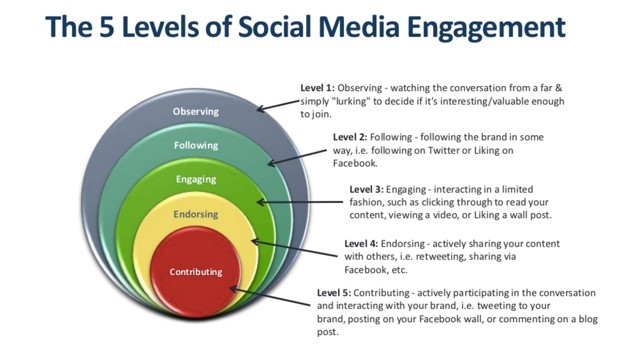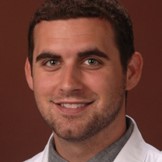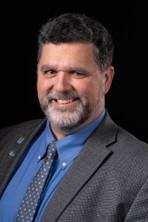Article:
Carroll CL, Dangayach NS, Khan R, et al. Lessons Learned From Web and Social Media-Based Educational Initiatives by Pulmonary, Critical Care, and Sleep Societies. Chest. 2019;155(4):671-679. doi:10.1016/j.chest.2018.12.009.
Summary:
Social media-based resources are becoming more prominent in medical education and represent a powerful modality to expedite the distribution of novel research and information. This provides both learners and educators with an effective medium for ongoing self-learning and resources for teaching. Although web-based approaches have obvious benefits, challenges do face this new facet of medical education. This article reviews several years of utilization data by pulmonary, critical care, and sleep societies to better identify effective initiatives, as well as current pitfalls, to improve overall participation and guide future efforts. For this blog post, Casey Morris interviewed first author Chris Carroll.
Interview:
CM: Social media based medical education is becoming more popular, especially involving national conferences. What do you believe are the strengths of utilizing this medium?
CC: There are so many! Social media is a fantastic for self-directed learners. Today, we literally have opened up all of human knowledge to anyone with a smartphone. It is an unbelievable time to be alive and the opportunities for education and for learning are almost limitless.
CM: It is obvious that medical education content via social media is a growing field, providing educators with a new facet to reach learners. Although innovative, it can be daunting to start participating in conversations and creating content. Any advice to new users in how to navigate and approach social media based medical education?
CC: There are levels to social media engagement. No one starts out as a content creator. One of my favorite graphics about this is below (wish I knew who to give this credit to!). At first, everyone starts out observing and following. Then, as you get more comfortable, some will start engaging and endorsing content. Not everyone moves into the content creation phase, and that’s ok!
Finally, don’t worry about catching up. You’ll never do it. That’s why they call it a “stream”. Just dip in from time to time and see what’s there.

CM: As stated in the article, there are “more than 1 billion medical education links found on Google”. With the ever-growing dissemination of information and the use of social media, do you feel that it will become more difficult in the future to effectively curate content?
CC: You’ve hit upon a very important point. The biggest challenge of our time is the fight against disinformation. We are drowning in data and starved for knowledge. In addition, social media algorithms foster echo chambers, which shield us from opinions different from our own. Social media was supposed to connect us, but it still feels like the wild west out there. As we try to figure out the best way to navigate this new world, we will need to develop new systems to help curate the most reliable content and separate the educators from the charlatans.
CM: Social media platforms all have restraints regarding character, images and data limitations when posting content. This could be detrimental if learners only utilize this “highlight” approach, especially if the content link requires a paid subscription. Have you noted this to be an issue with using this platform?
CC: I don’t think the space issue is a problem. Through bite sized learning, we develop the framework of understanding that we can fill in later as we gain knowledge and experience. Paywalls are problematic for those who believe that information should be free and openly available. But “open access” is a double-edged sword. Everything costs something and if you aren’t the customer sometimes you’re the product. Sometimes, “free” is marketing something or pushing an agenda that may be hidden to you. And sometimes the free content isn’t as vetted as the paid content. I’d love a future where articles are priced more cheaply. We think nothing of spending $1.99 to download the latest episode of our favorite show, and I think that pricing model would work well for journals too.
CM: In the article, you comment that ancillary accounts are managed solely by clinician volunteers and many of the accounts are utilized sparingly, only posting content a few times per month. Barriers to increasing physician participation are likely time constraints and lack of incentive. In the future, how do you see this problem being addressed regarding programs and support systems for physicians?
CC: I worry about volunteers burning out with managing social media accounts. There aren’t a lot of us who have been around on social media for many years. Many start off altruistically creating content, but then many either burn out, some commercialize their endeavors, and only some remain true to their original educational goals. I think it is really important for physicians to ask, why they are doing social media? Is your goal to educate the public? To educate trainees? To have a support network? All are valid goals, but having them at the beginning will help you remember them as the years go by.

Blog post author
Casey Morris, MD is a fellow in Pulmonary & Critical Care at Baylor University Medical Center in Dallas, Texas. He completed his internal medicine training at Memorial University Medical Center in Savannah, Georgia. His academic interests include medical education, bedside teaching in the ICU, quality improvement initiatives and improving procedural skills.
Twitter handle: @CaseyMorrisMD

Article author
Chris Carroll is a Pediatric Critical Care Physician at Connecticut Children’s and Professor of Pediatrics at the University of Connecticut. He is an active researcher and has published more than 250 academic abstracts, papers and book chapters. Dr. Carroll has been a strong proponent of the use of social media to educate, advocate, and build community and currently serves as Deputy Editor of Web and Multimedia for Journal CHEST, and Chair of the Social Media Work Group for the American College of CHEST Physicians. He publishes regularly on the use of social medicine in academic medicine and is always looking for new people to collaborate with!
Twitter handle: @ChrisCarrollMD



